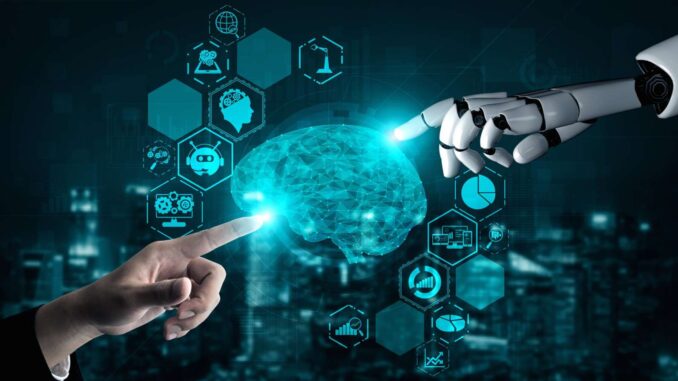
AI integration capabilities refer to how well artificial intelligence technologies can be incorporated into existing systems, applications, and workflows.
Effective integration allows organizations to leverage AI functionalities, such as predictive analytics, natural language processing (NLP), machine learning, and computer vision, seamlessly alongside their current operations.








Here are key considerations and aspects of AI integration capabilities:
### Key Aspects of AI Integration Capabilities
1. **API Integration**
– **Application Programming Interfaces (APIs)** allow different systems to communicate with each other. Many AI platforms provide RESTful APIs that make it easy to incorporate AI features into existing applications.
– Examples include Google Cloud AI APIs, IBM Watson APIs, and various machine learning frameworks like TensorFlow Serving.
2. **SDKs and Libraries**
– Software Development Kits (SDKs) and libraries help developers create applications that utilize AI without having to build everything from scratch.
– For instance, TensorFlow and PyTorch provide libraries that can be easily integrated into Python applications.
3. **Data Integration**
– AI solutions need access to data for training and inference. Having robust data connectors that integrate with databases, data lakes, and data warehouses is crucial.
– Solutions such as Apache Kafka, Apache NiFi, and Talend can streamline data integration processes.
4. **Cloud Compatibility**
– AI platforms often have offerings that run in cloud environments like AWS, Azure, or Google Cloud, facilitating seamless integration with cloud-based applications and services.
– Utilizing cloud services also supports scaling and resource management for AI workloads.
5. **Microservices Architecture**
– Implementing AI components as microservices allows organizations to develop, deploy, and manage AI functionalities independently from other applications or services.
– This architecture supports flexibility and scalability, making it easier to update or replace AI components as needed.
6. **No-Code/Low-Code Platforms**
– These platforms allow users with limited coding experience to integrate AI capabilities into applications through visual interfaces.
– Examples include Microsoft Power Platform, Mendix, and Bubble.
7. **Containerization and Orchestration**
– Tools like Docker and Kubernetes allow AI models and applications to be containerized for consistent deployment across various environments.
– Containerization can simplify dependency management and streamline deployment processes.
8. **Monitoring and Maintenance Tools**
– AI solutions should include capabilities for monitoring model performance and updating them as needed. Integration with existing monitoring tools can help organizations maintain overall system health.
– Platforms like Prometheus and Grafana can be used for monitoring purposes.
### Considerations for Successful AI Integration
1. **Compatibility with Existing Systems**
– Ensure that the AI solution is compatible with current technology stacks, including databases, application servers, and data pipelines.
2. **Data Privacy and Compliance**
– Consider the implications of handling sensitive data and ensure that integration upholds relevant regulations like GDPR, HIPAA, etc.
3. **Change Management**
– Implement a strategy for training staff and managing changes to workflows and processes that AI integration brings.
4. **Interoperability**
– Design the system to allow different AI tools and solutions to work together in a coherent manner without causing disruptions.
5. **Scalability**
– Choose AI solutions that can scale to meet growing data demands and increase usage without significant performance degradation.
6. **User Experience**
– Focus on user experience and ensure that AI integrations do not complicate workflows or hinder usability.
7. **Monitoring and Feedback Loops**
– Establish systems for continuously monitoring AI performance and user feedback to make necessary adjustments and improvements.
### Examples of AI Integration Use Cases
– **Chatbots and Virtual Assistants:** Integrating AI-driven chatbots into customer service platforms to enhance user interaction and optimize response times.
– **Predictive Analytics:** Using machine learning models integrated into customer relationship management (CRM) systems to forecast sales trends and improve decision-making.
– **Recommendation Engines:** Deploying AI algorithms within e-commerce platforms to suggest products based on user behavior and preferences.
– **Fraud Detection:** Implementing machine learning solutions in finance systems to analyze transactions in real-time and flag suspicious activities.
### Conclusion
AI integration capabilities play a critical role in the successful adoption and implementation of AI technologies within organizations. By carefully considering the factors involved in integrating AI solutions, organizations can enhance their operational efficiency, improve decision-making processes, and drive innovation in their products and services. The key is to choose the right tools and strategies that align with business objectives while facilitating seamless integration.

Leave a Reply